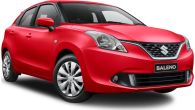No longer is the Prius an only child, now part of a family that includes the Camry and two new Prius siblings - the "v" and the "c".
The “c” is the “city” car hybrid version of the Yaris, which is at least a $2000 price rise over the top spec petrol powered light car from Toyota but there's 30-odd more kiloWatts and Newton-metres on offer for the cash, as well as a claimed fuel consumption figure that is nearly halved.
Toyota has so far sold more than 3.5 million hybrids globally - including 35,000 in Australia - and if you're a city-dweller there's much to like.
VALUE
The range starts from $23,990 or you can opt for the i-Tech version that is priced from $26,990.
The standard features list includes climate control, Bluetooth (phone and audio) keyless entry and start, a touchscreen controlled infotainment system, satnav with SUNA real-time traffic information, 15in alloy wheels, cruise control, power windows and mirrors (that also fold in), a 60/40 split-fold rear seat and self-levelling LED headlights with washers.
The interior trim is a mix of plastic and what Toyota calls “man-made leather” but feels more like something you would have found in a 1970s LandCruiser - vinyl.
TECHNOLOGY
This is where the Prius c has plenty of green-cred, using a revamped version of the Prius petrol-electric hybrid system, a set-up that is proven but has been lightened and shrunk to take up less space in the Yaris-based package. The petrol side of the equation is a 1.5-litre Atkinson cycle alloy four-cylinder with variable valve timing, teamed with a permanent-magnet electric motor and generator.
The engine also has water-cooled exhaust-gas recirculation and the water pump and air conditioning compressor are both operated without belts, which reduces the drag on the engine and allows them to operate when the petrol engine is stopped. The system feels smoother in the transitions between drive and power generation, as well as tag-team act between petrol and electric drive.
The electric system's cooling has been integrated into the main system for the petrol engine, there are more compact exhaust and catalytic converter components and the nickel metal hydride battery and fuel tank for the petrol engine are now placed beneath the rear seat.
DESIGN
A little longer and lower than the Yaris, but otherwise similar in dimensions, the Prius c has adopted styling cues that make it part of the Prius family but it has retained the look of a cute-ish city runabout. It's not going to offer sprawling space within but there's reasonable room given its segment position.
The driver - even one above 190cm - can get a reasonable driving position, although a similarly-sized passenger might not want to be sitting behind them. The driver is met with a centrally-mounted digital speedo and trip computer, set well back in the dash, with the touchscreen set further down.
Rear occupants don't suffer too much for the presence of the battery beneath the seat, which frees up the boot for 260 litres of luggage space (26 litres less than the conventional Yaris, which means it's in the ballpark for the class) and a full-size spare wheel.
SAFETY
Toyota is expecting the Prius c to gather the same number of stars - five - as the Yaris, given it shares its safety features list of seven airbags (dual front and front-side, full-length curtain and a driver's knee airbag), a reversing camera, stability and traction control, LED lights front and rear, anti-lock brakes with brake assist and electronic brakeforce distribution (for the front-disc rear-drum system) and a hill-start system.
The stoppers on the Prius c are electronically controlled to merge the two retardation systems - the regenerative and normal braking - for smoother stops, something the early Prius had difficulty doing.
DRIVING
On approach, there's no freakazoid look to the Prius c - it's not going to frighten potential customers away. Inside, the first thing you'll wonder about it is the trim materials, which are probably light and green to manufacture and recycle, but are certainly a different feel.
That goes for the seat trim, which Toyota calls “premium” in this i-Tech model - perhaps they have a different definition, but it's not the first word I'd use to describe it. There's useful amounts of storage space in the doors and centre console, including some spots ahead of the driver, who gets a big-bossed steering wheel with controls for the climate and cruise controls, as well as audio and trip computer, but phone controls are on the touchscreen.
The top-spec model has decent adjustment for seat and steering to allow even taller drivers to get comfortable behind the wheel - vision is good fore and aft and the centrally- mounted display (with digital speedo and informative trip computer) all in easy line of sight.
The verdict on the ride is good - occupants normally indifferent to most vehicles were actually outspoken about the Prius c's ride quality, and while it’s no hot hatch it does sit reasonably flat - economy is king and the skinny rubber is certainly aimed at that.
But as a commuter car the “c” is up to the task - creeping in peak hour on electric-only (until the right pedal is pushed hard) makes for a quiet wait in bottlenecks and electric mode makes predatory parking in an underground carpark an eerily quiet exercise.
The changes between driving forces is smoother, as is the switch between braking systems - provided you're not trying to make considerable and rapid progress, the “c” does a decent job of keeping pace in the traffic. Using the B function on the transmission means more regenerative braking force and plenty of battery reserve to call on if needed, but better throttle control is required.
Metropolitan running is where the “c” is at home and that showed on the trip computer - the claims are all in the high-threes but my lead-laden size 13 right foot has never been much good at replicating ADR figures. We ended up with 5l/100km after our week in the car, which still equates to a ballpark 700km range, not bad for a 36 litre tank.
VERDICT
It's cheaper than the pure-electric options from Nissan and Mitsubishi and the mild-hybrid Hondas, but some smaller Euro diesels (Mini, Citroen, Peugeot and Smart) will offer decent fuel economy numbers and better open-road driveability. It's horses for courses - if you spend most of the time in the city, then hybrids make sense - there's much to like about the drive, it's just let down by a low-grade feel in the cabin.
Toyota Prius C
Price: from $23,990, i-Tech from $26,990
Warranty: 3 years/100,000km
Resale: 52 per cent (Source: Glass's Guide)
Service interval: 10,000km/6 months
Safety rating: five star (predicted)
Spare: Full-size alloy
Engine: 1.5-litre DOHC 16-valve four-cylinder, 54kW/111Nm; 45kW/169Nm electric motor, nickel metal hydride
Transmission: CVT; FWD
Body: 4m (L); 1.7m (w); 1.5m (h)
Weight: 1120kg
Thirst: 3.91/100km, tank 36 litres, on test 5l/100km, 91RON; 90g/km CO2
Toyota Prius C 2013:
| Engine Type | Inline 4, 1.5L |
|---|---|
| Fuel Type | Unleaded Petrol/Electric |
| Fuel Efficiency | 3.9L/100km (combined) |
| Seating | 5 |
| Price From | $8,800 - $12,430 |
| Safety Rating |
|
Pricing Guides

Range and Specs
| Vehicle | Specs | Price* |
|---|---|---|
| Base | 1.5L, Unleaded Petrol/Electric, SPEED CONTINUOUS VARIABLE | $8,800 - $12,430 |
| I-Tech | 1.5L, Unleaded Petrol/Electric, SPEED CONTINUOUS VARIABLE | $10,230 - $13,970 |









































.jpg)









































.jpg)